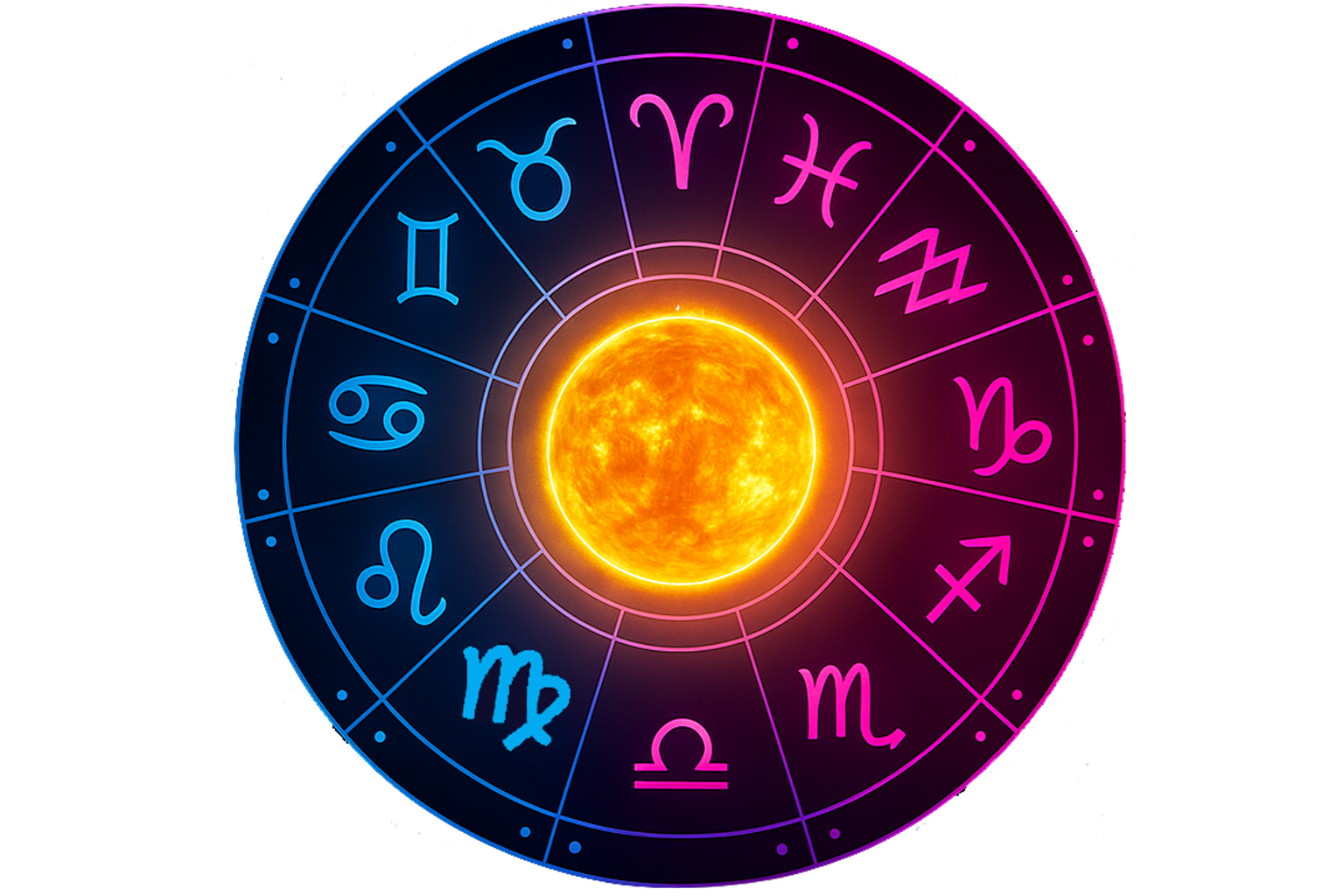 MyAstroTruth.com
MyAstroTruth.com
ASPECT
Interplanetary Dynamics
Astrological Aspects
In astrology, aspects are the angles between planets in a natal chart. They indicate how planetary energies interact with each other, shaping personality traits, emotional patterns, relationships, and life events. Aspects can be harmonious, challenging, or neutral, providing insight into strengths, challenges, and potential growth areas. Understanding these connections allows astrologers to interpret a chart more accurately and helps individuals recognize their natural tendencies and life patterns.
Conjunction (0°)
A conjunction occurs when two planets align closely at the same degree. This aspect blends the energies of both planets, creating intensity and focus. The combined influence is powerful, often amplifying the qualities of each planet. Conjunctions can lead to strong drive, self-expression, and determination. While this energy is potent, it can sometimes feel overwhelming or obsessive if not balanced. Conjunctions are ideal for harnessing concentrated energy toward personal goals and ambitions.
Sextile (60°)
Sextiles create harmonious, cooperative energy between planets, encouraging opportunities and growth. They indicate natural talents, curiosity, and problem-solving skills. Individuals with strong sextiles in their chart tend to flow smoothly with challenges, finding creative solutions. This aspect is supportive rather than forceful, often bringing favorable circumstances in career, learning, and relationships. It represents potential that can be realized with effort and awareness.
Square (90°)
A square is a challenging aspect that indicates tension and conflict between planetary energies. It highlights areas where growth requires effort, discipline, and self-reflection. Squares often manifest as internal struggles, external obstacles, or recurring life lessons. While they may bring stress or frustration, squares are catalysts for change, resilience, and personal development. Individuals with squares can achieve great progress by confronting challenges and embracing adaptability.
Trine (120°)
Trines represent smooth, flowing, and harmonious energy. Planets in trine support each other, bringing ease, confidence, and talent. This aspect highlights areas where life naturally unfolds with little effort. Trines often indicate creativity, positive relationships, and personal gifts. While they are beneficial, it is important to actively utilize trine energy, as the ease they bring can sometimes result in complacency or missed opportunities if ignored.
Opposition (180°)
An opposition occurs when planets are directly across from each other in the chart. This aspect creates polarity, requiring balance and compromise. Oppositions often highlight conflicting desires, relationships, or life priorities. They encourage self-awareness, negotiation, and understanding of others’ perspectives. While oppositions can be stressful, they provide opportunities to integrate different energies, fostering maturity, insight, and harmony through conscious effort.
Minor Aspects
In addition to the major aspects, minor aspects such as the Quincunx (150°) and Semi-Sextile (30°) provide subtle influence in a chart. These aspects indicate underlying tensions, adjustments, or opportunities for refinement. While they are less prominent, they offer valuable insight into nuanced personality traits and hidden dynamics. Minor aspects help astrologers add depth and detail to chart interpretations.
Overall, understanding astrological aspects is essential for a complete analysis of a birth chart. They reveal how planetary energies combine, challenge, and balance each other, shaping one’s character, relationships, and life path. By studying both major and minor aspects, individuals gain a comprehensive view of their strengths, growth areas, and potential opportunities for personal evolution.